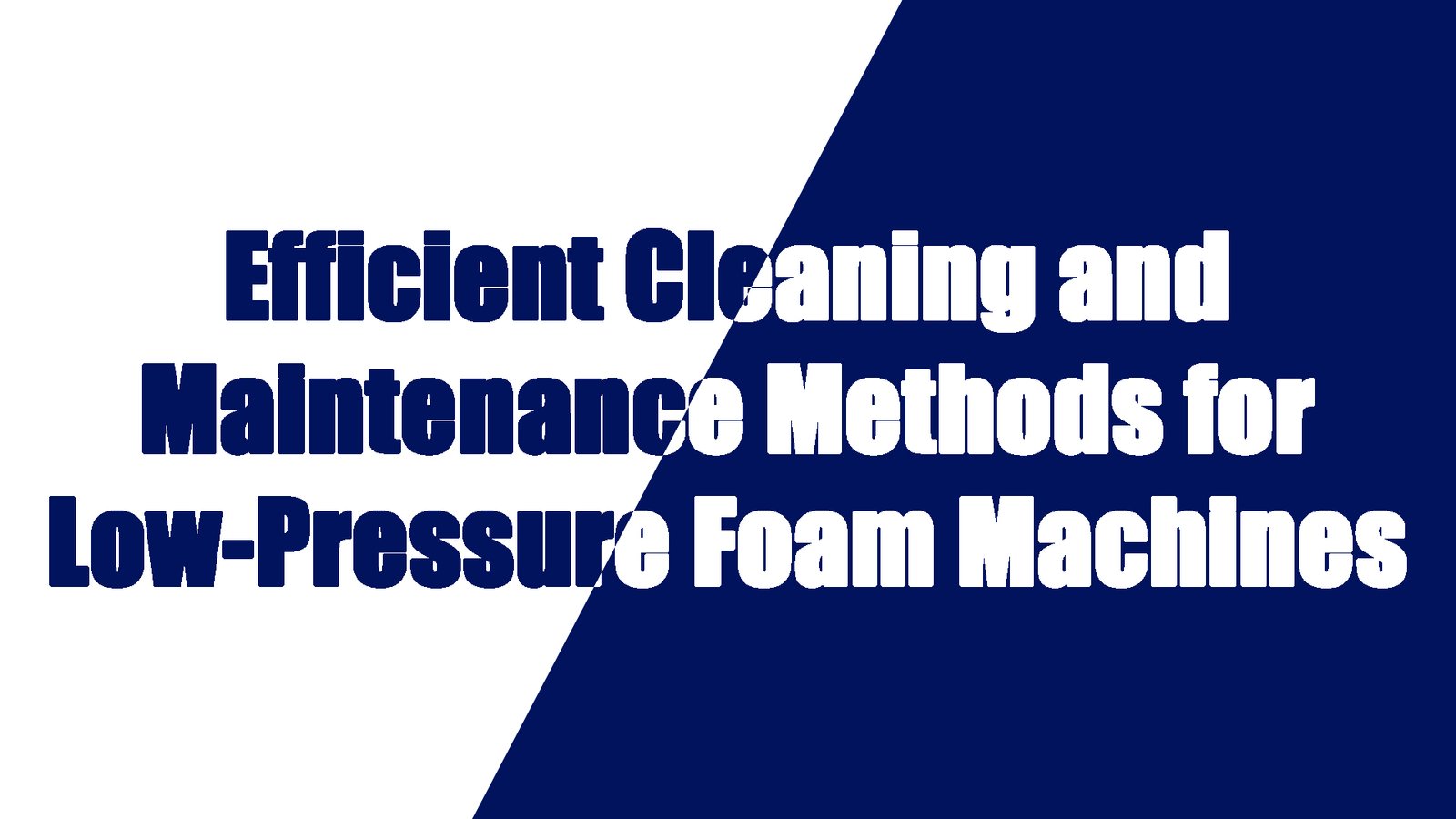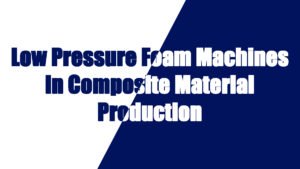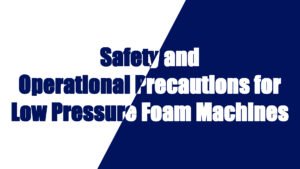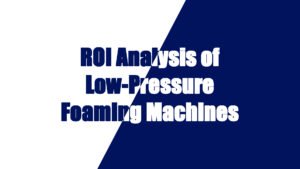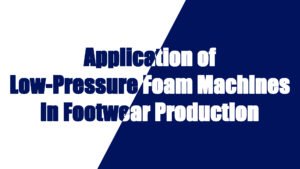Low-pressure foaming machines are critical equipment in the production of polyurethane foam materials, widely used in industries such as Konstruktion, automotive, Und Verpackung. Over time, these machines can accumulate foam residues, chemicals, and impurities, which not only affect the quality of foam but may also lead to equipment failure and downtime. To ensure long-term high-efficiency and stable operation, as well as to reduce downtime and improve production efficiency, regular cleaning and maintenance are essential. This article delves into the methods for cleaning and maintaining low-pressure foaming machines and provides detailed steps to help customers keep their equipment in optimal working condition.
Importance of Cleaning and Maintenance
Cleaning and maintenance are the foundation for ensuring the performance of low-pressure foaming machines. They are also key to extending the lifespan of the equipment and improving production efficiency. If a machine is not cleaned or maintained regularly, it can lead to residue buildup, clogging of pipes, wear and tear on mechanical parts, and poor operation. Here’s why cleaning and maintenance matter:
- Improve Production Efficiency: Regular cleaning reduces residue and blockages, ensuring uniformity and high-quality foam, thus increasing production efficiency.
- Extend Equipment Lifespan: Timely maintenance helps prevent excessive wear and tear, avoiding premature equipment failure and reducing repair costs.
- Ensure Product Quality: Clean equipment ensures consistent foam quality, reducing defects in the production process and improving overall product quality.
- Reduce Downtime: Well-maintained equipment can quickly resume production after cleaning, minimizing downtime and improving workflow continuity.
Cleaning Steps for Low-Pressure Foaming Machines
Cleaning is the first step to ensuring low-pressure foaming machines operate efficiently. The key components that need to be cleaned include the mixing system, injection pipes, nozzles, and material tanks. Below are the specific steps for cleaning a low-pressure foaming machine:
Preparations Before Cleaning
- Turn Off Power: Always ensure the machine is powered off before beginning any cleaning procedure to avoid accidental startup or electrical hazards.
- Prepare Cleaning Agents: Choose an appropriate cleaning agent for the foaming machine. Generally, mild, non-corrosive cleaning agents are preferred. Depending on the foam raw materials used (such as polyether polyols, isocyanates), specialized cleaning agents or solvents may be needed to ensure effective cleaning.
- Disassemble Key Components: Disassemble parts like the nozzles, mixers, and injection pipes that are prone to residue buildup. Handle the parts with care to avoid damage.
Cleaning the Internal System
- Clean the Mixing System: The mixing system is crucial for foam quality. Use a cleaning agent to flush the mixing pipes and mixer, eliminating foam residues. A mixture of cleaning agents and warm water can be used to flush the system, ensuring all residues are removed. A soft brush may also be used to scrub hard-to-reach areas.
- Clean the Injection Pipes and Nozzles: The injection pipes and nozzles are responsible for transferring raw materials and foam. Residue buildup can cause uneven spraying or clogging. Use cleaning agents to flush the pipes and ensure that all foam residues are cleared. A pressure washer or soft brush can help remove stubborn buildup in the nozzles.
- Clean the Material Tanks: Material tanks store raw materials for foaming. Over time, residual raw materials can accumulate. Drain any remaining materials from the tanks, then use a cleaning agent to rinse the inside thoroughly, ensuring that no chemical residue remains.
- Check Pipes and Valves: The pipes and valves in low-pressure foaming machines are vital for material flow. Check for blockages or foam buildup, especially in the pipeline joints and valves. Clean these components using cleaning agents or warm water to prevent clogging and ensure smooth flow.
External Cleaning and Inspection
- Clean the External Surface: Use a soft cloth and mild cleaning agent to wipe down the machine’s exterior, especially the control panels, buttons, and display screens. Avoid excessive water usage to prevent water from entering the electrical or control systems.
- Check the Electrical System: Inspect the electrical connections and switches for loose or corroded parts. Pay special attention to sensors and control boards to ensure stable connections. Regularly replace batteries and fuses to maintain electrical system functionality.
Maintenance Steps for Low-Pressure Foaming Machines
Once cleaning is complete, maintenance is equally important. Regular maintenance helps keep the equipment stable, identifies potential issues early, and prevents failures during production. Below are the key maintenance steps for low-pressure foaming machines:
Equipment Inspection
- Inspect the Hydraulic System: Check the hydraulic system for any oil leaks or pressure inconsistencies. Replace hydraulic oil regularly and ensure that the cylinders and pipes are securely connected to avoid leaks.
- Inspect the Electrical Components: Inspect the electrical system, including motors, switches, and wiring. If any loose or aging connections are found, replace or repair them promptly to ensure stable operation.
- Check the Air Source and Pressure: Verify that the air source system is stable and that compressed air is clean and at the proper pressure. If air pressure is too low or unstable, make adjustments or repairs as needed.
Lubrication and Calibration
- Lubricate Moving Parts: Moving parts such as hydraulic pumps, valves, and mechanical arms should be regularly lubricated to reduce friction and wear. Proper lubrication ensures smooth operation and prolongs the lifespan of these components.
- Calibrate the Equipment: Regularly calibrate the pressure and temperature sensors to ensure that the equipment’s operational parameters are accurate. Proper calibration prevents production deviations due to inaccurate readings and ensures that foam quality is consistently maintained.
Prevent Chemical Residue Buildup
- Control Raw Material Proportions: During operation, ensure that raw materials are accurately measured to avoid excess material in the system, which could cause buildup or clogging. Regularly inspect the material tanks, mixing systems, and nozzles to prevent accumulation of residue.
- Empty Residual Materials Regularly: After each production cycle, empty any remaining raw materials from the equipment and clean the pipes and tanks to prevent residue from building up and affecting the next batch of foam production.
Tips to Improve Cleaning Efficiency
Automatic Cleaning Function: Many modern low-pressure foaming machines come equipped with automatic cleaning systems. These systems reduce manual cleaning time and improve overall cleaning efficiency. When purchasing equipment, consider opting for machines with automatic cleaning features to enhance workflow.
Establish a Regular Maintenance Schedule: Set up a routine cleaning and maintenance schedule and ensure that operators follow it strictly. Regular maintenance helps identify issues early and prevents unexpected equipment failures, reducing downtime.
Operator Training: Train operators on the proper cleaning and maintenance procedures. Ensure they are familiar with how to disassemble, clean, inspect, and reassemble components. A well-trained team is crucial for maintaining high equipment reliability.
Efficient cleaning and maintenance of low-pressure foaming machines are fundamental to ensuring optimal performance and extending the equipment’s lifespan. By following the correct cleaning and maintenance steps, equipment can continue to operate at peak efficiency, reduce downtime, improve product quality, and extend the overall life of the machine. A proactive approach to cleaning and maintenance, including regular checks, lubrication, and calibration, will minimize failures, reduce repair costs, and enhance production efficiency. Clean and well-maintained machines contribute to a smooth production process and, ultimately, to a more cost-effective and reliable manufacturing operation.


















